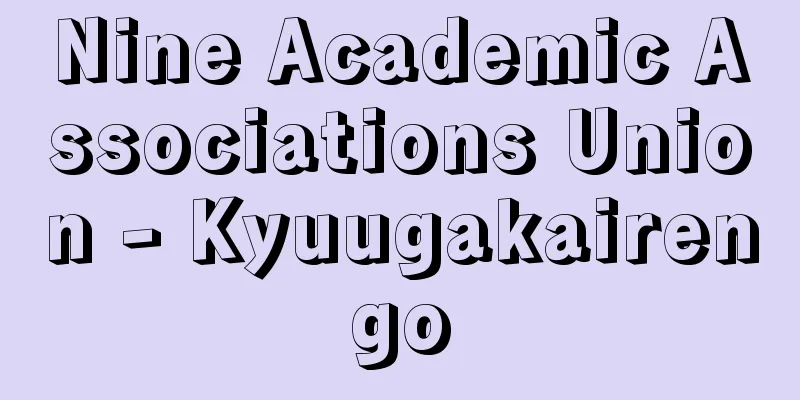Eiichiro Ishida - Ishida Eiichiro

|
Cultural anthropologist. After the Second World War, he established the Department of Cultural Anthropology at the University of Tokyo, and worked hard to promote research, education, and dissemination of cultural anthropology at Tohoku University, Saitama University, the Japanese Society of Ethnology, and other institutions, laying the foundation for the development of cultural anthropology in Japan. He also made many achievements in the theoretical study of culture and Japanese cultural theory. Born in Osaka as the grandson of Baron Ishida Eikichi (1839-1901), he went on to Tokyo Prefectural Fourth Middle School, First High School, and Kyoto Imperial University (Faculty of Economics). His research on Marxism and his closeness to communists violated the Peace Preservation Law, and he was imprisoned for six years (1928-1934). After his release, he studied at the University of Vienna, where he studied ethnology, and returned to China (Northwest Institute) when the war ended. As a professor at the University of Tokyo (1951-1964), he was involved in the establishment and operation of the university's specialized cultural anthropology course. He later worked at Tohoku University and Saitama University, and became president of Tama Art University in April 1968, passing away in November of the same year. He wrote "Cultural Anthropology Notes" in 1967. His other works include "Thoughts on the Kappa Komahiki" (1948) and "Momotaro's Mother" (1956). [Yoshio Onuki November 19, 2018] "Complete Works of Eiichiro Ishida, 8 volumes (1970-1972 / New edition, 1977, 1978, Chikuma Shobo)" ▽ "Ishida Eiichiro, edited by Masao Yamaguchi (included in Japanese Folk Culture Series 8, 1979, Kodansha)" [Reference] | |Source: Shogakukan Encyclopedia Nipponica About Encyclopedia Nipponica Information | Legend |
|
文化人類学者。第二次世界大戦後、東京大学文化人類学教室の開設をはじめ、東北大学、埼玉大学、日本民族学会などにおいて、文化人類学の研究、教育、普及に尽力、日本の文化人類学発展の基礎固めをした。文化の理論的研究や日本文化論でも多くの業績を残している。男爵石田英吉(1839―1901)の孫として大阪に生まれ、東京府立四中、一高、京都帝国大学(経済学部)に進む。マルクス主義の研究、共産主義者たちへの接近が治安維持法に触れ、6年間(1928~1934)禁錮刑に服した。出所後、ウィーン大学に留学、民族学を修め、中国(西北研究所)で終戦を迎え、帰国。東京大学教授(1951~1964)として、同大学の文化人類学の専門コースの創設と運営に従事、のち東北大学、埼玉大学を経て1968年4月多摩美術大学学長、同年11月死去。1967年に『文化人類学ノート』を著す。著書はほかに『河童駒引考』(1948)、『桃太郎の母』(1956)などがある。 [大貫良夫 2018年11月19日] 『『石田英一郎全集』全8巻(1970~1972/新装版・1977、1978・筑摩書房)』▽『山口昌男編著『石田英一郎』(『日本民俗文化大系 8』所収・1979・講談社)』 [参照項目] | |出典 小学館 日本大百科全書(ニッポニカ)日本大百科全書(ニッポニカ)について 情報 | 凡例 |
<<: Ishida Tamigai (lipped periwinkle)
Recommend
Uraku style
This is one of the schools of tea ceremony founde...
Joint mouth - Joint mouth
...A general term for a structure that crosses an...
Ney - Ney (English spelling) Persian
A non-reed aerophone used in Western Asia, Centra...
Edo School
〘 noun 〙 A school that was active in Edo. ① A scho...
Hirose Asahi-so
A Chinese poet and Confucian scholar from the lat...
Temporary parent - Karioya
〘noun〙① A person who raises and cares for a child ...
Patent attorney - Benrishi (English spelling)
A patent attorney is someone who has national qua...
Marcabrun
… The troubadours may be divided into the followi...
Mountain sheep
…Also called bighorn sheep, it is a sheep with la...
Earpiece method - Earpiece method
...At the recording site, blood is drawn into a s...
Castellano - Castellano
...Thus Castilian came to be the standard form of...
Brunfelsia americana (English spelling)
…[Kazuo Furusato]. … *Some of the terminology tha...
Nichiroku - Nichiroku
This is the major work of Gu Yanwu, a thinker fro...
barlow
…(3) Jackknife: A large folding knife whose origi...
Caecilianidae - Legless Forest
…Most are about 24-30 cm in length. (1) The Ichth...









